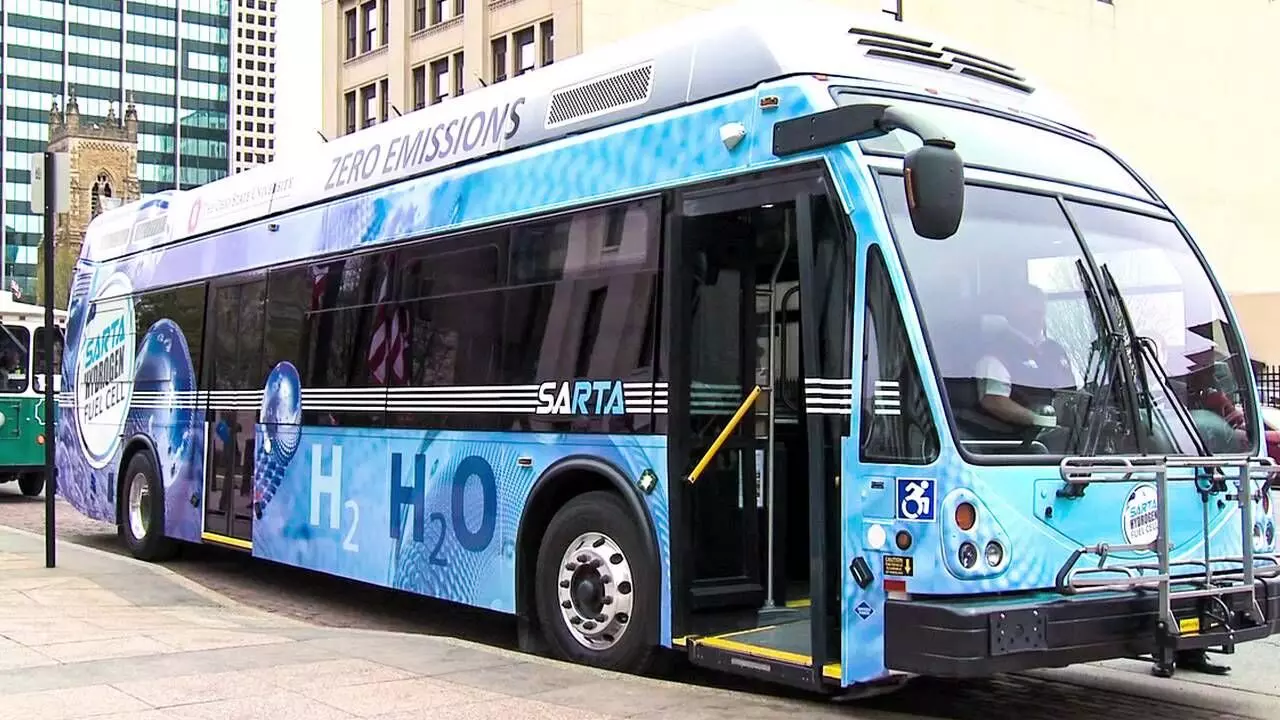Re-defining mobility
Commercialisation of hydrogen-powered, zero-emission FECBs can transform India’s mobility sector by enhancing fuel efficiency and bringing down the cost factor

In clear alignment with India’s vision to become a global hub of green hydrogen, Olectra Greentech in partnership with Reliance and Oil India Limited (OIL) came to unveil indigenously developed Fuel Cell Electronic Buses (FCEB) in February 2023. Though India now has quite a few FCEB initiatives in place, the country still has miles to go in terms of the availability of hydrogen in adequate amounts that would enable FCEBs to emerge as a practical carbon-free alternative.
There are, however, multiple advantages to introducing FCEBs in India’s public transport sector that ought to be noted. Quieter than their combustion cousins, FCEBs are known to be quiet vehicles due to fewer vibrations from the moving parts. Refuelling them is also much quicker than the time taken to charge a battery electric vehicle, and stands at par with those of combustion vehicles.
Since hydrogen fuel weighs lesser than electric batteries, they become an attractive option for long-haul vehicles and driving long distances. A bus can have higher amounts of energy available without any significant increase in its weight — an important consideration in cases of long-haul buses with regard to maximum permissible safe axle weight.
Its exhaust products being simply water and heat, make it a zero-emissions vehicle and allows one to keep their vehicle on even while it is stopped, to provide cooling and heating for comfort. For instance, the heat produced can be utilized for warming up passenger compartments, thus eliminating the requirement for separate diesel heaters for use in the winter months.
If the hydrogen for the fuel cells is itself procured from carbon-neutral sources like solar or wind power, it would undoubtedly emerge as an important source of carbon-neutral and emission-free energy. Having no toxic tailpipe emissions and only water vapour as the end-products, FCEBs would thus ensure remarkable improvement in the country’s air quality, especially in light of how vehicular pollution has emerged as the primary source of India’s outdoor air pollution.
Further, FCEBs travel about twice the distance on equivalent amounts of fuel. Though they might cost more than conventional buses, they are found to have a lower maintenance cost in the long run. As per a Deloitte-Ballard study which compared the total cost of ownership (TCO) of fuel cell electric vehicles (FCEVs) and battery-electric vehicles (BEVs), FCEVs were expected to cost lesser to own and operate in comparison to both traditional vehicles and BEVs by 2027.
Hydrogen fuel cells being a non-toxic source of fuel, offer a better alternative to coal and natural gas in the sense that they are potentially dangerous and hard to obtain as coal and natural gas are usually found in places having a hazardous environment. There are also environmental risks associated with regard to potential disasters emanating from seaborne oil spills and gas pipelines.
On the other hand, hydrogen being a basic earth element is easily available and quite abundant. It is also said to be much more fuel-efficient in comparison to gas and diesel, as it can produce much more energy for every pound of fuel, and be produced again and again, unlike the other non-renewable fossil fuel-based sources of energy. Being ubiquitous in nature, it can even cater to the demands of future generations to come.
The local production of hydrogen provides for fuel source security, eliminating the country’s need to import offshore oil that presently stands at a monumental 82 per cent per year. As raw materials used for making fuel cells include Nafion, Silicone Rubber, Teflon, Carbon Paper, Platinum, Graphite and Carbon Fibre, they can all be easily sourced indigenously, thus resting on the principles of self-reliance or an ‘Atmanirbhar Bharat.’
Also at present, India has a limited number of hydrogen fuel stations. India’s first and only operational green hydrogen fueling station is in Ladakh. This severely restricts an FCEB’s mileage in the process. Thus, it has become essential to develop more hydrogen stations around the country to popularize FCEBs and continue the national drive towards decarbonizing the transport sector and securing sustainable mobility.
For the commercialization of hydrogen buses, significant considerations must be taken into consideration regarding the construction of infrastructure — hydrogen stations in this case.
After all, the production of hydrogen-fuelled vehicles would remain limited if there are not enough takers for such vehicles if access to hydrogen refuelling stations is difficult. Parallelly, companies shall not build refuelling stations in large numbers, if there are not enough takers for hydrogen-fuelled vehicles!
Also, an example effective way to popularize the use of FCEBs would be by making use of Mobility as a service (MaaS), which provides for all transportation options — ranging from the planning of a trip to the final payment, and encourages the use of public transport by providing for an enhanced customer experience.
Some major players in the MaaS market include Uber, Rapido, Ola Cabs, Vogo, Yulu and Bounce. What is essential is a user-centric and transparent transport system, that would not only be key in popularizing the use of FCEBs but help in reducing the usage of fossil fuel-based modes of transport.
As per the latest Road Transport Year Book (2018-2019), the share of buses in India’s total vehicle fleet stood at a mere 0.69 per cent and as per a study by the Observer Research Foundation, on average, there is approximately a monumental 8 million tonnes of CO2 emissions from publicly owned buses, which account for just 7 per cent of the country’s total bus population!
Considering such concerning statistics, FCEBs would be a vital element in India's transition to a more sustainable transport system. With the hydrogen being generated from renewable energy sources that make it a completely green initiative, the introduction of FCEBs would help usher in a new era of hydrogen-based zero-emission futuristic mobility solutions.
Views expressed are personal



